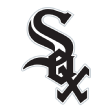Now that the 2019 MLB draft is in the books, it's time to break down notable picks from this year's class. Here is the American League and click here for the National League.
The Orioles picked first overall and took the No. 1 prospect in Adley Rutschman (1), a no-doubt catcher with plate discipline and power. He could be in the majors by the end of next year, depending on how quickly they want to move him. The Orioles then picked first in the second round and landed prep shortstop Gunnar Henderson (2). He was No. 41 on my board but seen by many teams as worth a pick in the second half of the first round as a power-hitting infielder likely to move to third base, with questions about his bat speed.
Zach Watson (3) was a draft-eligible sophomore last year but wasn't seen as signable, so he returned to LSU for his junior year. He's a plus runner who should be an above-average-or-better defender in center, but he has below-average power and very low walk rates, with some length in the early part of his swing. He'll have to tighten that up and get on base more (or find more power) to profile as a regular. He turns 22 this month. New Mexico State shortstop Joey Ortiz (4) is a plus defender with good bat-to-ball skills, but he is an average runner without power, and his upside is a little limited.
Darell Hernaiz (5) is from El Paso, which is one of the more isolated baseball areas for scouting. He's a prep shortstop who's still slight of build but has some quick actions and could get to an above-average hit tool while staying at short. Right-hander Griffin McLarty (8) is a strike-thrower who showed average velocity most of the spring, lacking any above-average pitch, but with the command and control to possibly end up a back-end starter. His velocity ticked up at the end of the spring, and his slider improved accordingly, giving him a bit more upside.
Boston was the only team without a first-round pick this year, with its top pick bumped down 10 spots to No. 43 because the team exceeded the luxury-tax threshold. The Red Sox started their draft with Cam Cannon (2), a shortstop from the University of Arizona who has to move to another position, likely second base, but has great bat-to-ball skill and at least good doubles power. They went for more upside with their normal second-round pick, Puerto Rican shortstop Matthew Lugo (2), who just turned 18 a few weeks ago. I think the consensus is that he's likely to move to third base in the long run, but he's here for his swing, which he repeats well and produces hard line-drive contact that I think will turn into above-average power when his body fills out.
Kansas right-hander Ryan Zeferjahn (3) has a starter repertoire but below-average command and just had a down year for the Jayhawks, up to 95 mph with a short slider and circle-change, nothing very consistent, and walked too many hitters this year with a near-4 ERA.
Right-hander Noah Song (4) is the best prospect to come out of the Naval Academy in quite some time, up to 96 with good spin on two different breaking balls. His delivery has some red flags, with a high elbow and late pronation, but the bigger concern is when he might be allowed to pitch since he has a two-year commitment to serve in the Navy after graduating.
Jaxx Groshans (5) is the older brother of Blue Jays prospect Jordan Groshans, who was a first-rounder last year. A catcher for the University of Kansas, he's fringy behind the plate and did most of his damage out of the conference this year, hitting just .272/.434/.432 in Big 12 play. He seems like a potential backup. Lefty Chris Murphy (6) was a senior at the University of San Diego but has good enough stuff to be a prospect, up to 95 with an above-average curveball. He just hasn't had the kind of results he should have with that stuff.
The White Sox took my No. 2 player, Cal first baseman Andrew Vaughn (1), with the third overall pick. He's the best pure bat in the class, with a plus hit tool, ridiculously good eye and above-average power.
In the second round, they took prep right-hander Matt Thompson (2), who had a miserable spring but in the past has been mid-90s with an above-average breaking ball, and has a lot of projection left. I had him ranked much lower, having seen his velocity drop to 83-86 in the fourth inning, but he was far better last summer, and the Sox might be betting on a bounce-back.
They look like they're going over slot for right-hander Andrew Dalquist (3), a high school projection guy with athleticism, solid command and control, and average stuff, touching 94, but the potential for a plus fastball and breaking ball when he fills out. He was a Day 1 talent but lasted until the third round. Mississippi prep outfielder James Beard (4) is one of the fastest players in the draft, at least the fastest high school player, a potentially plus-plus defender in center with bat speed and the body to hit for power, but he's raw as a hitter and, given the history of prep hitters from Mississippi, probably a two-year rookie ball guy. The Sox's fifth- through seventh-round picks were college seniors, presumably to pay for their top four guys, absolutely a good risk given how strong their top four picks were.
Cleveland made one of the most puzzling picks of the day when it took Georgia prep right-hander Daniel Espino (1) in the first round. I had multiple teams tell me they had taken Espino off their boards because of concerns about his arm, and it seemed likely that he'd fall out of the first round, but Cleveland appears unperturbed, much as it took Ethan Hankins in the first round last year after injury concerns knocked him out of the top half of the round. The Indians took elite defensive shortstop Yordis Valdes (2) in the second round, the right spot for him, given his defensive prowess and how far he has to go with the bat.
First baseman Joseph Naranjo (3) has good hand-eye coordination and might end up with an above-average hit tool, but it's a flat swing without power, and he's probably limited to first base, given his body and lack of athleticism. Christian Cairo (4) is the son of longtime big-league infielder Miguel Cairo and is a lot like his father, a very likely big leaguer but without much ceiling. He improved both his running speed and arm strength this year and can play shortstop now but is probably a high-contact, low-power hitter in the long run, like Miguel was.
Right-hander Hunter Gaddis (5) is a sinker/slider guy who is 6-foot-6 but had trouble getting a consistent delivery going all spring, along with little help from the defense behind him. He's good value here as a college arm with upside now that he'll be in a good player development system. Shortstop Jordan Brown (6) was a surprise pick, a Fresno State commit who is very slight and has a well below-average hit tool with a swing that gets very uphill. Xzavion Curry (7) has a 26-point first name in Scrabble. He's a 5-foot-10 right-hander with two pitches, a starter this year for Georgia Tech who'll be mid-90s on his fastball with an average curveball in relief, which is his future role.
Detroit grabbed Riley Greene, a high school outfielder who some scouts think has the best offensive upside in the whole class, then backed it up with third baseman Nick Quintana, who can hit for contact rather than power and plays plus defense at third despite a lack of foot speed.
The Tigers love to take guys from the University of Tennessee and did so again with Andre Lipcius (3), who hit 16 homers, with 12 of them coming at UT's home park. He plays third base now, but there's an even chance that he moves to first, as he's a below-average athlete and runner. UCLA's Ryan Kreidler (4) played adequately at shortstop this year but will probably move to second or third, and his bat is a little light for those positions.
East Carolina left fielder Bryant Packard (5) has some hand speed but a very late trigger and little weight transfer or hip rotation, so he doesn't hit for power. He had just three homers in conference play this spring, and two came against last-place South Florida. Ole Miss catcher Cooper Johnson (6) has the defensive chops to be a regular, especially his arm, but hasn't hit enough to project him as a regular, with only a .265 average and .369 OBP this year.
Right-hander Zack Hess (7) could be good value for the round if the Tigers put him back in the bullpen, as his velocity dropped a grade, and his control was far worse when he worked as a starter over the past two springs at LSU. When he moved back to the bullpen this spring after a hamstring injury he was far more effective, throwing 22 innings with 33 strikeouts and just nine walks, improvements in both rates versus when he started.
Arkansas second baseman Jack Kenley (8) is an above-average defender with sneaky power and solid plate discipline, maybe more of a utility guy who could bounce to third or a corner outfield spot, but I'd give him a chance to be a regular at second. John McMillon (11) is a pure reliever for Texas Tech, coming right over the top with a 93-97 mph fastball and slurvy low-80s breaking ball.
The big shocker of the first night was Houston going off the top 100 entirely with Korey Lee (1), the catcher from Cal who didn't appear on MLB's top 100. Lee wasn't seen as any kind of prospect coming into this year, off a .238/.328/.426 sophomore season, though he had a strong summer in the wood-bat Northwoods League last year and exploded this year to hit .339/.415/.613 with 13 homers. But he wasn't a Day 1 talent, with a plus arm and plus power but below-average receiving skills and a below-average hit tool. Neither was their second pick, Ole Miss shortstop Grae Kessinger (2), a performance draft pick who never strikes out but totally collapses his back leg through contact, making any power unlikely, and whose range is probably too limited for short.
Jordan Brewer (3) is more intriguing as a great athlete who was a decent football prospect in high school, a 70 runner who didn't play much center for Michigan but should be able to move there in pro ball. He has above-average raw power but has to tighten up his approach to get to it. Colin Barber (4) was the Astros' first high school pick this year. The University of Oregon commit has good balance to his swing and above-average speed, but he'll need some swing work to unlock any power.
Wayne State right-hander Hunter Brown (5) has been 94-98 as a starter with an average slider that you could project to a 55 or better; most scouts project him as a reliever, but he should at least start in the low minors. Matthew Barefoot (6) led the Cape Cod League in batting average last summer but hit just .311/.407/.570 this spring for small-conference Campbell. He's a senior but won't turn 22 until September.
The Royals took a pair of shortstops on Day 1, grabbing Bobby Witt Jr. (1) with the second pick and Brady McConnell (2) in the second round. Witt is a plus defender at short with a plus arm, and McConnell will likely move to another position. Witt has speed and can show some power, but it's a bit of a big swing and he collapses his back side, so many scouts questioned where his hit tool is right now. He's also about to turn 19. McConnell is a premium athlete whose tools haven't translated into performance yet, but this is a bet on some upside, as he does show bat speed but swings and misses way too often.
The Royals grabbed Arizona State right-hander Alec Marsh (2A) with their last Day 1 pick. Marsh has a four-pitch mix, nothing plus, but competes well and looks like he can turn a lineup over enough to project as a back-end starter. Oregon State right-hander Grant Gambrell (3) has a chance for three average pitches with fringy command; he missed some time this year with "arm tenderness," continuing a trend of arm issues for OSU pitchers in recent years. He might profile as a fifth starter. Illinois second baseman Michael Massey (4) DH'd most of the year due to a back injury that scared some teams off him completely; he's a high-contact hitter who doesn't walk or hit for power, with above-average defense at second.
Illinois State center fielder John Rave (5) is a plus runner who can handle center field but has a long swing, leading the Redbirds in strikeouts this year without the big power you'd want from a low-contact guy. Lefty Drew Parrish (8) throws 90-92 mph as a starter to go with an average curveball. I'd like to see what he looks like out of the pen, where both pitches might be above-average to plus. Left-hander Justin Hooper (14) has thrown 2/3 of an inning total the past two years for UCLA. He could have gone in the first round in 2015 but wanted too much money, so he went to school, pitched poorly for two years and blew out his elbow. He's 6-foot-8 and had a plus fastball before surgery; his arm slot was low, and his arm action rough, but it gave him a lot of deception as well.
I had the Angels linked to various high-ceiling high school athletes at Pick 15, but they went for a safer player in NC State shortstop Will Wilson (1), probably a second baseman in the long run but with the power to profile there. They then took their athlete in fleet-footed shortstop Kyren Paris (2), who is very young and has a lot of physical growth ahead of him, with a swing scouts really like for future contact.
Jack Kochanowicz (3) is a solid, projectable high school right-hander, committed to the University of Virginia but apparently more interested in signing, bringing size and some arm speed along with a potentially plus curveball. He needs some delivery help and to add strength to boost his velocity.
The Angels announced Puerto Rican pitcher Erik Rivera (4) as a two-way player before rescinding that. He could certainly go out both ways, as he has good power at the plate and profiles well in an outfield corner, and on the mound, the lefty is up to 93-94 with some feel to spin the ball. It might be better for him to develop as just one or the other. Garrett Stallings (5) is a command right-hander with four pitches, nothing plus, up to 93, with a back-end ceiling -- if he can miss some bats.
They ran off a string of college arms who look like they could be big-league relievers in Rounds 6 through 9. Zach Peek (6) might get to a 55 breaking ball, but his fastball plays light. Kyle Brnovich (8) misses a lot of bats with his knuckle-curve and change but doesn't throw enough strikes, and his delivery points to the bullpen, with a late arm and big head violence at release. Zach Linginfelter (9) could have had a high-six-figure bonus out of high school but went to Tennessee instead, where he has struggled as a starter, including allowing 10 homers in 68 ⅔ innings this year.
Third baseman Keoni Cavaco (1) feels like a slight reach for me at 13, where the Twins took him, but the industry had him in that range -- he was in various mixes from 15 onward. His body changed substantially for the better this winter, and he has an intriguing power/speed combination, with some teams less confident in his hit tool. The Twins definitely wanted power, though, going for Southern Miss outfielder Matt Wallner (1A), who has power, hit better as the season went on and could move to the mound if he doesn't work out at the plate. He was 94-98 with a plus slider there before he stopped pitching. They took Rice right-hander Matt Canterino (2) in the second round. He has a potentially plus breaking ball but a very rough delivery that will make it hard for him to stay a starter.
Oregon shortstop Spencer Steer (3) is a strong kid without anything plus but a good history of contact without power. He's a plus defender at third, maybe a 70, but was drafted as a shortstop and might be able to be average there. Wright State third baseman Seth Gray (4) is an above-average defender with athleticism and some pop, definitely intriguing for a fourth-rounder. Auburn shortstop Will Holland (5) was on my preseason top-30 ranking, meaning I thought he'd be a first-rounder, but the Tigers changed his approach, especially with two strikes, and it ruined his spring. Even a strong finish pulled his average up only to .248. He can stay at shortstop, and the Twins could try to restore his hitting mechanics and plan to where they were before 2019.
Sawyer Gipson-Long (6) is a strong right-hander with effort to his delivery, showing arm strength and an average curveball, but he posted a 5.20 ERA this year and was hit harder than you'd expect, given his stuff. Right-hander Casey Legumina (8) was shut down after four starts this spring with a sore flexor tendon in his forearm, but before that he showed a plus fastball and average secondary stuff, and he has always thrown strikes; he was a top-100 talent if healthy.
The Yankees almost had my lowest-ranked pick of the first round, taking prep shortstop Anthony Volpe (1) at pick 30. There are scouts who love his instincts on both sides of the ball, and he is a very polished high school player, but there's no plus tool here and maybe not an above-average one depending how you rate his pure hitting skill. The Yankees' second pick, Missouri lefty TJ Sikkema (1A), was a sort of sleeper pick, assuming a major college arm could still be undervalued. He's a three-pitch guy, up to 96, with tremendous feel to pitch, a clear starter whose command and approach might give him more upside than most college arms. I know multiple area scouts who loved him and wanted him in the second round.
LSU second baseman Josh Smith (2) was off some boards due to a major back injury that cost him almost all of 2018. He has some juice and an average hit tool, but like Volpe, there's nothing plus here. He reminds me a little of second baseman Nick Solak, whom the Yankees took in the second round in 2016 and later traded to Tampa Bay.
Canadian-born Western Kentucky outfielder Jake Sanford (3) won the Conference USA Triple Crown this year and posted a .488 OBP. He is a plus runner with 70 raw power, perhaps a corner outfielder in time but fast enough to send him out as a center fielder. He's from Nova Scotia and spent his first two years at a junior college, so he was barely known before this spring. I think if he had been on the scene before, maybe playing on the Cape for a summer, he would have gone at least a round higher.
Lefty Jake Agnos (4) is 90-93 with some riding life and really attacks hitters in the zone with it, pairing the pitch with a 12/6 curveball with high spin, something the Yankees tend to value. He has consistently missed bats as a starter at East Carolina, with a 34% strikeout rate this year. Lefty Ken Waldichuk (5) works with a fringy fastball and average to above-average curveball now, with mechanical issues that point more to a bullpen role, though there could be more in there if the Yankees clean up his delivery. Right-hander Hayden Wesneski (6) was Sam Houston State's best starter this year, a sinker/slider guy who throws a ton of strikes, probably a reliever but worth sending out as a starter to see if his changeup can be enough of a weapon for him to start.
Oakland started off with Clemson shortstop Logan Davidson (1), who I think came out of spring 2018 as someone teams figured would be a top-10 pick as a solid to above-average defensive shortstop with power but a little swing-and-miss. He had a rough 12 months after that, with an awful showing in the Cape Cod League and zero improvement this spring. He never hit .300 in any of his three years with the Tigers and still swings and misses more than you'd like for his profile. It's good value given how the industry viewed him a year ago. The A's stayed in the ACC for their second pick, UNC right-hander Tyler Baum (2), who has been up to 97 mph and throws a lot of strikes but has had trouble holding velocity deep into games as a starter.
Marcus Smith (3) was a Michigan commit, a left-handed hitting outfielder from the Kansas City area who profiles as a potential center fielder and leadoff hitter with good instincts on the bases and a contact-oriented swing that's probably too flat for much power.
Kyle McCann (4) isn't a catcher, but he has a plus arm and power to all fields, with very strong hands. I'm not sure where he'll play, but maybe you let him fake right field and see if he can be a low-OBP slugger. Jalen Greer (5) is a projection athlete with a lot of room to fill out, still very raw as a hitter and lacking hand/forearm strength to drive the ball. He's a middle infielder but doesn't run as well as typical shortstops do. He's committed to Missouri.
Georgia Southern right-hander Seth Shuman (6) has been up to 95 mph and is very athletic, a strike-thrower who misses bats and could move faster with some help with his secondaries. Drew Millas (7) is a solid defensive catcher now with a plus arm and is a switch-hitter but strikes out too often and doesn't hit for power, so he might be an all-glove backup if he doesn't improve his contact rates or put more pitches in the seats. Right-hander Colin Peluse (9) is 92-94 with a cutter that looks like an out pitch, though his delivery is so quick that he doesn't show much command and might be a reliever.
The Mariners crushed some college pitching, taking Elon's George Kirby (1) at 20. He had a historic strikeout/walk ratio this spring, showing a potentially plus curveball and fastball up to 95-96, a mid-rotation upside on stuff that could skew higher with his command. Isaiah Campbell (2A) is a great value play, another strike-thrower with an above-average fastball/slurve combo, slipping a little because he missed 2017 due to elbow surgery. In between, they took large TCU lefty Brandon Williamson (2), who has that potentially above-average fastball/breaking ball combination but lacks the command of the other two.
Lehigh right-hander Levi Stoudt (3) was hitting 95 mph on the Cape last summer and seemed to be a potential Day 1 guy coming into the year but was more average in velocity and secondaries this year, without a lot of projection left. Right-hander Tim Elliott (4) has good feel to pitch with mostly average stuff. He could be a back-end starter, thanks to his competitiveness, but the lack of a plus pitch holds him back. Third baseman Austin Shenton (5) doesn't look the part for the position, with a stockier catcher's body, but he has a good swing that should produce average pull power, and he has the arm strength to stay at third or maybe handle right field. He improved as the season went on, hitting much better in conference play after a slow start.
Michael Limoncelli (6) is both a projectable right-hander and a delightful after-dinner drink. He was 90-94 with good spin on a curveball before he blew out his elbow, undergoing Tommy John surgery just this week. It's a great buy-low opportunity for the Mariners and some security for the player in case the surgery isn't successful. Right-hander Ty Adcock (8) closed and played right field for Elon this spring. He's a prospect on the mound, mid-90s, touching 97-98, with an average slider, and of course scouts hope he'll improve as a pitcher once that's his only focus. He's a redshirt junior and should sign under slot.
The Rays picked four times and were sort of all over the place, at least in that there's nothing tying all these picks together. The first pick was UNC-Wilmington shortstop Greg Jones (1), an 80 runner and one of the fastest players I've ever seen. He's a bad defender at short, and a switch-hitter without power and without much consistency to the swing. I think he ends up in center field, and there are a lot of similarities to Billy Hamilton. JJ Goss (1A), the Rays' first pick in the Comp Round A, was my No. 2 prep pitcher in this class, a tall right-hander with a three-pitch mix, a good delivery and an aggressive style with at least average control right now. Seth Johnson (1A) is a converted position player who threw all of five innings before this year, hit 98 regularly with a good delivery and doesn't have much in the way of secondary stuff or present command, which is perhaps unsurprising given his history. John Doxakis (2), their second-round pick, has plus command, can miss bats with his slider and has a viable changeup, but his fastball shows a lot of upper 80s, and he might not have the delivery to start. That's still a good bundle of value, even if I had those players ranked differently than the Rays did.
Shane Sasaki (3) is an undersized high school outfielder from the Honolulu area with above-average speed but no other average tools right now. He's apparently an under-slot guy, which fits, as the industry saw him as a substantial overdraft in the third. Duke lefty Graeme Stinson (4) was an upper-90s guy in relief who broke down as a starter this spring, dropping to the mid-80s before he was shut down with what the team said was a hamstring injury. This is a great gamble if he'll sign, even if he simply comes back as a power lefty out of the pen.
Lefty Ben Brecht (5) throws a ton of strikes with an average fastball/changeup combination, getting some help from his 6-foot-7 frame and good extension, but his slider is below-average, and he needs some mechanical cleanup to be a potential back-end starter.
Colby White (6) is 95-99 with a foshball sort of changeup that really plays. He could use some kind of breaking ball or cutter and could end up a solid middle reliever.
TCU senior Jake Guenther (7) might be a money-saver, but he can hit a little bit, or maybe more than a little bit, with a little pop and a great eye. This feels better than your average senior sign. Nathan Wiles (8) is a finesse lefty with great control, but his fastball is light, and he was homer-prone this year for Oklahoma. Zach Huffins (13) was one of the fastest players in the draft class, so the Rays appear to have had a predilection for those guys. The Arizona Western Junior College product is a center fielder with great range but a question on his hit tool.
Texas took third baseman Josh Jung (1) in the first. He's a polished hitter with strength but no more than average present power, and I think he has work to do to remain at third base. It seemed a little high for him to go in the top 10, given who was on the board. The Rangers did grab a pitcher with UCLA right-hander Ryan Garcia (2) in the second round. He has solid off-speed stuff with plus feel and command, but his fastball is a little light, and he hasn't held his stuff well into games. In between, they took big power bat Davis Wendzel, a third baseman from Baylor who has an 80 mullet.
New Mexico right-hander Justin Slaten (3) has a low-90s fastball and average slider, but it's a rough delivery with head whack and a late arm. I think he goes to the bullpen. Cody Freeman (4) is the younger brother of Cleveland prospect Tyler Freeman; Cody doesn't have Tyler's hit tool or defensive chops other than a superior arm but still doesn't swing and miss much. He's a Baylor commit and probably an over-slot guy here. Cody Bradford (6) made only three starts this spring before undergoing surgery to alleviate thoracic outlet syndrome, an operation with a less-than-promising track record when it comes to pitchers. Before that he was a command guy with two to three average pitches, but nothing above that, and he could be a below-slot guy to pay for the team's next pick.
Brandon Sproat (7) is a recent convert to pitching, a former shortstop who shows three pitches now with good sink on his fastball. He's a good athlete who can really run and has a lot of room to fill out, kind of more typical of recent Rangers drafts, still raw as a pitcher who needs work on his delivery tempo. Even over slot here, he's a great pick. Kent State lefty John Matthews (8) had a 5.45 ERA this year but was much better in the second half of the spring. His stuff is average in the rotation, but he can touch 94. He played the infield regularly as a freshman but didn't at all this year.
The Blue Jays benefited from the three teams in front of them going with position players by landing Alek Manoah (1), who I had as the best pitcher in the entire draft class. He's a four-pitch right-hander who attacks hitters in the zone and throws a ton of strikes. That's easily one of my favorite picks of the draft. They also took a projection right-hander in Kendall Williams (2) in the second round. He's 6-foot-6 with velocity and good breaking stuff, needing some delivery help, but a great complement to the advanced college arm.
Outfielder Dasan Brown (3) is indeed a Canadian player but also a real prospect as a 70 runner with bat speed and a good body. He's still pretty raw at the plate, and he glides out over his front side, so he might take more time than the typical prep outfielder to get to full-season ball. Creighton outfielder Will Robertson (4) has good power the other way and is a potential regular in right field, but the way he closes off at the plate means his hips can get locked up on velocity inside. He has almost a negative stride and ends up losing power when he does that, though all of this could be fixable. Yes, this means the Blue Jays selected a Blue Jay.
Virginia infielder Tanner Morris (5) can really hit, at least for average, probably with fringy to average power, but he isn't a shortstop and might end up a 45 defender over at second between his lack of range and below-average arm.
Georgia second baseman LJ Talley (7) is a senior but a bit better than a senior sign, with good bat-to-ball skills and a balanced swing through contact. He's playable at best at second and doesn't have big power, so he'll have to keep his OBP up to have a chance to start. Philip Clarke (9) is a draft-eligible sophomore at Vanderbilt, which is about the least signable thing in the baseball universe, but the Jays took him, and I assume he'll sign. He's a left-handed-hitting catcher with some pop but has a lot of work to do behind the plate to be even a quality backup.















